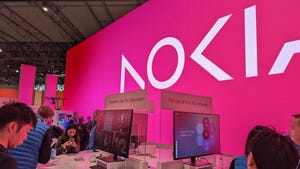NTT Docomo pulls its NB-IoT service after less than a year
Japanese telco NTT Docomo has decided providing services based on NB-IoT narrowband technology isn’t worth the hassle, so it’s going to stop.
March 31, 2020

Japanese telco NTT Docomo has decided providing services based on NB-IoT narrowband technology isn’t worth the hassle, so it’s going to stop.
The brief announcement was published only in Japanese, so we’re indebted to Google Translate once more. It apparently said NTT has been offering NB-IoT services since 25 April 2019, but in the light of the current business environment it’s going to stop, in order to concentrate management resources.
Read into that translation what you will, but it seems clear that the technology just isn’t adding up. Even more damning is the fact that NTT is going to keep providing IoT services based on Cat 1 and LTE-M technology, which implies it’s specifically the standard, rather than IoT in general, which is failing to deliver.
To find out why that might be we spoke to wireless technology expert William Webb. “NB-IoT looked at one time as if it would become the only wide-area IoT network, sweeping all others away,” said Webb. “Its advantages seemed to be overwhelming – it can be deployed by a software update to existing 4G base stations, quickly and cost-effectively delivering nationwide IoT coverage. Chipsets are available from Huawei and others and many module designs are in the marketplace although these have not yet hit the price points and power consumption levels that were originally promised.
“But things have not gone quite to plan. NB-IoT has not been widely deployed. In some countries only one MNO has deployed, resulting in no competition. In other countries operators are deploying ‘on demand’, waiting until they have an order and then delivering the coverage required (eg across a campus). Only in a very few places is there vibrant competition.
“Why is this? Broadly it is due to the business case. Revenues are very weak with 10-year IoT SIM cards available for around $10, so only $1/year, miniscule by cellular standards. Volumes have been low, as they have for all IoT systems, questioning whether this is a large market. Sales have been difficult, requiring complex systems offerings, at high cost. As a result, many MNOs are struggling to make NB-IoT viable. And there is an opportunity cost as NB-IoT takes some spectrum away from the cellular network.”
Webb concluded by noting that this move is likely to send shockwaves around the telecoms world, as it will cause everyone else to question the viability of investing in NB-IoT services. That, in turn, could well initiate a self-reinforcing downward spiral. NTT made no mention of COVID-19 in its announcement, but it seems safe to assume the business environment will be very risk-averse for the rest of this year, which is further bad news for the LPWAN standard that once looked destined to dominate the IoT world.
About the Author
You May Also Like












_1.jpg?width=300&auto=webp&quality=80&disable=upscale)
